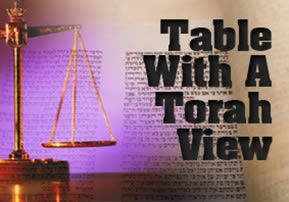
Mishpatim: Table With A (Torah) View
After the Torah was given, those who received it pass it on to the next generation of Jews. Therefore, the first issue is "chinuch" - Torah education.

FRIDAY NIGHT:
א וְאֵ֨לֶּה֙ הַמִּשְׁפָּטִ֔ים אֲשֶׁ֥ר תָּשִׂ֖ים לִפְנֵיהֶֽם:
And these are the judgments that you shall place before them. (Shemot 21:1)
YOU SHALL PLACE BEFORE THEM: The Holy One, Blessed is He, said to Moshe, “Don’t think that it is enough to teach them a section and a law two or three times until they know it well, and not trouble yourself to make sure they understand it and its explanations.” Thus it says, “You shall place before them, that is, like a table that is set and ready for eating.” (Rashi)
Rashi, in his first explanation of the parshah, finds a couple of reasons for why this section follows the previous parshah. However, based upon what he has said above, there is an additional explanation that is, the most important of all for Torah survival.
In the previous parshah, the Torah was given. After giving mankind 2,448 years to “get it,” and then not getting it, G-d finally decided to give it. The first giving of Torah was “easy;” having been given by G-d Himself, we can assume that it was a perfect giving, in such a way that every individual there at the time heard Torah on the level he was capable of understanding it, as G-d wanted him to understand it.
However, after the Torah was given, it became the responsibility of those who had received it to give it again to the next generation of Jews, after which it would become the responsibility of the latter generation to give it again to their children, and so on and so forth throughout all the generations until the end of history.
Therefore, the first (or at least one of the first) questions after receiving the Torah had to have been, “How do we do that? How do we successfully transmit Torah from generation to generation, throughout all the generations, with as much accuracy as is humanly possible?” For, if we can’t, then what will have been accomplished by giving Torah at all in the first place? (Actually, quite a lot, but still . . .) Therefore, it makes sense that the first issue after the giving of the Torah is “chinuch” – Torah education itself.
Like the word “Chanukah,” chinuch means “dedication,” because that is the ultimate goal of any educational process, to inspire dedication. It is not just enough to teach values, as any good educator and astute parent will tell you. A responsible society requires responsible individuals, and that requires people to “buy into” the values on their own. Otherwise, people break laws any time they believe they can get away with their offense.
Perhaps that is one of the other reasons why, immediately after this message, the Torah begins with one of the most technical aspects of Jewish law: Servants. Not only are these laws many and what many might consider to be “dry,” however, they haven’t even been applicable during main periods of Jewish history.
Nevertheless, such laws are as important as any other part of Torah, inasmuch as they complete the Torah picture. Every law, every word, and even every letter is a piece of a puzzle that allows us to look at the world through G-d’s eyes, so-to-speak, and act as He would have us act, thereby completing ourselves and creation. Only someone who knows how to find meaning in all that Torah has to teach can remain inspired and therefore, dedicated to all that Torah is.
This is because G-d made man in such a way that, more than comfort, he seeks meaning. The proof of this comes from watching how people will suffer to accomplish all kinds of goals they find meaningful, even though they are not obligatory. The tremendous drive for comfort, and entertainment for that matter, is not the result of an aversion to pain, but the result of Western life having been stripped of any ultimate meaning.
That made life painful, and sent Western man in search of painkillers, which, as we have come to learn, come in all kinds of shapes and sizes. They say that you can measure the inherent meaning in a society by how much money and time they spend on entertainment, ways to blank out of life and fantasize about realities beyond their own. People who know how to find meaning in life choose to remain engaged in reality, not to become disengaged from it.
SHABBAT DAY:
ו חֲנֹ֣ךְ לַ֖נַּעַר עַל־פִּ֣י דַרְכּ֑וֹ גַּ֥ם כִּֽי־יַ֜זְקִ֗ין לֹֽא־יָס֥וּר מִמֶּֽנָּה:
Train a child according to his way. (Mishlei 22:6)
Therefore, chinuch is more than just commanding obedience. It is more than just molding children until they resemble the perfect images WE have in mind, which only works, for the most part, with a minority of children.
I have tried to show, albeit indirectly, how complicated human beings and history are, by borrowing from works such as Sha’ar HaGilgulim. The Talmud teaches:
Three are in partnership in [the creation of] a person: The Holy One, Blessed is He, the father, and the mother. From the father comes the bones, the tendons, the nails, the brains in the head, and the white of the eye. From the mother comes the skin, the flesh, the hair, and the black of the eye. From The Holy One, Blessed is He, comes the spirit, the soul, facial countenance, vision, hearing, speech, the ability to walk, understanding and discernment. When the time comes for a person to leave this world, The Holy One, Blessed is He, takes His portion, and that of the father and mother remains. (Niddah 31a)
This is very significant mussar. Except in cases where, G-d forbid, a child is born with a debilitating handicap, the part the mother and father provide for a child – the physical body, is the least of all issues when it comes to raising children. It is the spirit of the child, a function of the part that only G-d provides, the parents must harness to guarantee the child a productive life.
As Sha’ar HaGilgulim makes eminently clear, when it comes to a child’s soul and spirit, it is not a chip off the old block. True, it may come from a similar source as that of the father or the mother, but there is no genetic connection guaranteeing such a similarity. In many cases, and maybe even most cases, on the soul-level, our children are like total strangers, and for educational purposes, perhaps should be treated as such.
Thus, the wisest man of all time, Shlomo HaMelech, instructed:
ו חֲנֹ֣ךְ לַ֖נַּעַר עַל־פִּ֣י דַרְכּ֑וֹ גַּ֥ם כִּֽי־יַ֜זְקִ֗ין לֹֽא־יָס֥וּר מִמֶּֽנָּה:
Train a child according to his way. (Mishlei 22:6)
Each child has his or her own unique way, because each child has his or her OWN unique soul. And, without a prophet to tell you what type it is, we have to pay close attention to the child, and even to adults, to feel out what might be the special and unique path to their hearts in order to inspire their own dedication to the value we feel obliged to pass over to the next generation.
The downside to all of this is quite obvious. Rather than having one school for hundreds of children, you have to have, in effect, one school for every child, a financial and logistical impossibility. The potential result: Schools for children who can be molded, rejection of those who cannot.
The overall results can be in two different directions, forcing either a lot of compromises, or, ingenious solutions.
However, in the Western world, where the main point of education is to lead a person to a self-sustaining and reputable profession, the impact has been less. But, in the Torah world, where emphasis is placed mostly on educational and character perfection, the impact has to always be considered and closely monitored.
Yet, the answer to the question was one of the first lessons given to the Jewish people after the Sinai Experience, when properly understood.
SEUDAH SHLISHIT:
א כִּי֩ הִנֵּ֨ה הָֽאָד֜וֹן יְהֹוָ֣ה צְבָא֗וֹת מֵסִ֚יר מִירֽוּשָׁלִַ֙ם֙ וּמִ֣יהוּדָ֔ה מַשְׁעֵ֖ן וּמַשְׁעֵנָ֑ה כֹּל מִשְׁעַן־לֶ֔חֶם וְכֹ֖ל מִשְׁעַ֖ן־מָֽיִם:
For behold, the L-rd, G-d, Master of Legions, is removing from Jerusalem and from Yehudah support of men and support of women, every support of bread and every support of water . . .(Yeshayahu 3:1)
“Every stay of bread” refers to those who are learned in Talmud, as it says,
ה לְכוּ לַחֲמ֣וּ בְֽלַחֲמִ֑י וּ֜שְׁת֗וּ בְּיַ֣יִן מָסָֽכְתִּי:
“Come and partake of my bread and drink of the wine that I mixed” (Mishlei 9:5).
“Every support of water” refers to those who are learned in Aggados, for they attract a man’s heart like water with aggadah. (Chagigah 14a)
Dedication is a function of the heart. A person follows his heart, and depending upon how strongly he feels about something, that will determine the length to which he will go for it.
The trick is to use the mind to teach the heart what is valuable and worth dedication. The trouble is that, if the mind does not play this crucial role, then the heart can become dedicated to the most worthless things, and lead a person to waste his life.
What this really means is that a person is both intellectual and emotional. However, the two sides can be quite opposite from each other, and when they are, there is inner and personal turmoil. To be overly emotional is to be childish, which is okay if you are still a child. To be overly intellectual is to become emotionally detached, which creates loneliness, also no good.
Inner peace and personal perfection arrives when there is confluence between intellect and emotion, which amounts to the emotions or the heart – “buying into” the intellect’s agenda. History has proven what a difficult task this is in life. Life has proven that this is what growing up responsibly is all about. Therefore, the Talmud provides an invaluable hint to help the process along. It is called “aggadah.”
The word “aggadah” comes from the Hebrew word, “l’haggid,” which means “to tell,” and specifically, to tell a story, as in “Haggadah Shel Pesach.” Thus, the aggadah of the Talmud are the non-legal, story-like sections that usually serve to bind together the more technical and intellectually involving sections (the word “egged” also refers to that which binds).
In other words, nothing pulls the strings of the heart and gets its attention like a good story. A story talks to the mind and the heart, because it evokes emotions, which is essentially what entertainment is all about. It is the feeling of emotions that give us a sense of reality, and there is nothing more exhilarating than feeling real.
Every good educator knows that any technical lesson that can be taught as a story will enter both the student’s heart and mind, and leave an eternal impression. Depending upon the depth of the experience, the value will become part of the student’s psyche, his way of looking at life, and thus a trigger for dedication.
Even when we are willing to forgo the emotional part of the educational experience, we are still left with a weaker connection to the material. Somehow, the ideas will lack the power to penetrate our consciousness in order to become one with the way we think. It’s just the way G-d made man.
So, does this mean that the educational process, especially when it comes to Torah education, is meant to be one ongoing story-telling session? Does this mean that life is just one big story book? Does this mean that all educators ought to take courses to perfect their knack for telling a good story?
It probably wouldn’t hurt. However, as we would suspect, there are stories, and then there are stories. And, it was to the latter that G-d referred when He warned Moshe Rabbeinu about the risks of cutting the Torah educational process short.
MELAVE MALKAH:
The rabbis taught: Four entered Pardes: Ben Azzai, Ben Zoma, Acher, and Rebbi Akiva.
Rebbi Akiva told them, “When you arrive at the Stones of Pure Marble, don’t say, ‘Water, water,’ because it says,ז לֹֽא־יֵשֵׁ֨ב | בְּקֶ֣רֶב בֵּיתִי֘ עֹשֵׂ֪ה רְמִ֫יָּ֥ה דֹּבֵ֖ר שְׁקָרִ֑ים לֹֽא־יִ֜כּ֗וֹן לְנֶ֥גֶד עֵינָֽי:‘He who speaks falsehood will not be established before My eyes‘ (Tehillim 101:7).”Ben Azzai gazed at the Divine Presence and died, and with respect to him it says,טו יָקָר בְּעֵינֵ֣י יְהֹוָ֑ה הַ֜מָּ֗וְתָה לַֽחֲסִידָֽיו:“Difficult in the eyes of G-d is the death of His pious ones” (Tehillim 116:15).Ben Zoma gazed and went mad – to him the following verse may be applied:טז דְּבַ֣שׁ מָ֖צָאתָ אֱכֹ֣ל דַּיֶּ֑ךָּ פֶּן־תִּ֜שְׂבָּעֶ֗נּוּ וַהֲקֵֽאתֽוֹ:Have you found honey? Eat as much as is sufficient for you, so that you do not consume too much and have to vomit it . . . (Mishlei 25:16).Acher “cut off his plantings” (i.e., he became a heretic). Rebbi Akiva entered in peace and departed in peace. (Chagigah 14b)
At first, Pardes sounds like a physical place; indeed, the actual word “Pardes” means “orchard.” However, as we have mentioned many times before, from what the Talmud explains was the result of these rabbis’ excursion, one has to assume that Pardes, in this case, was not a typical “orchard.” This is why Tosfos explains:
ENTERED PARDES: For example, by way of a Name- they didn’t actually go “up,” rather it appeared to them as if they went up. (Tosfos)
Tosfos fills in the missing gap: Pardes is not physical, but spiritual, and can only be entered by “moving” from one state of consciousness to a higher one. In this case, the rabbis used Kabbalah and one of G-d’s Names to make the “climb” upward from level-to-level.
The real understanding of the Talmudic account comes from knowing that the word pardes is actually a roshei teivos (literally: “heads of words”) for the words: Pshat, Remez, Drush and Sod, which mean: simple understanding, hinted meaning, allegorical explanation, esoteric, or Kabbalistic meaning.
Hence, the Pardes of the Talmud is in fact a way of referring to the four levels upon which a Torah-concept can be understood. This is why they also correspond to four areas of Torah-learning, from the most obvious to the most esoteric: Mikrah (verses), Mishnah (terse oral legal teachings), Talmud (elaboration of Mishnah teachings), and Kabbalah (esoteric explanation of Torah).
Furthermore, these same four levels of Torah learning correspond to the four (of five) levels of our souls: Nefesh, Ruach, Neshamah, and Chiyah. These levels act as a bridge between G-d, Whose pure spiritual reality is too great for the human body to experience, and the body that must receive G-d’s light to survive.
Thus, Nefesh corresponds to Mikrah, Ruach corresponds to Mishnah, Neshamah corresponds to Talmud, and Chiyah corresponds to Kabbalah. Hence, the journey into Torah is a journey into the self, from the outer world of physicality into the inner world of spirituality.
And thus, entering the world of Torah is a process of “entering Pardes,” which is a process of intellectually piercing the message of Torah- of going from the simplest understanding (pshat) to the deepest possible understanding (sod). This creates the possibility of ascending from the lowest world to the higher worlds, depending upon the spiritual and intellectual ability of the person.
If anything, this teaches that one must not be satisfied with lower levels of learning Torah, for they are only stepping stones along the path to much higher levels. Any learning of Torah brings rectification to creation, and the deeper the level of learning, the more specific and profound the tikun can be to the person and creation. One must always strive for more, according to his or her level of ability to grasp the concepts and relate to them:
ד אִם־תְּבַקְשֶׁ֥נָּה כַכָּ֑סֶף וְֽכַמַּטְמוֹנִ֥ים תַּחְפְּשֶֹֽנָּה:
If you want it as you do silver, and search after it like buried treasures, then you will understand fear of G-d – Da’as Elokim you will find. (Mishlei 2:4)
Torah is a storehouse of axioms of truth that span all the levels of man’s consciousness, providing a spiritual and intellectual ladder to be climbed from the mundane, everyday world to the level of sublime holiness – to G-d. Hence, when one delves deeper into Torah, one delves deeper into himself, into his soul, and the discovery of sod is none other than the discovery of one’s deepest self, and the rectification of creation.
And, there is nothing that pulls the heart in the direction of the intellect more than the understanding of personal gain, of self-completion.
Ultimately, this was G-d’s message to Moshe Rabbeinu about his message to the Jewish people. From an early age, a child has to know there is more, and then more, and then more after that. And, at the proper stages of his educational growth, he must be given a taste of that sweet “more,” and how he can gain from it. That is, ultimately, the “set table” to which G-d referred, and the true source of dedication to that which G-d gave to save mankind and the world in which he lives.
***
Pinchas Winston is the author of over 95 books on various topics that deal with current issues from a traditional Jewish perspective. He has also written on the weekly Torah reading since 1993, called “Perceptions”, as well as on current topics and trends affecting Jewish history, past and present. One of his missions is to make the depth and beauty of the more mystical teachings of Torah understandable and accessible to those who can really benefit from them. Visit his website at thirtysix.org.




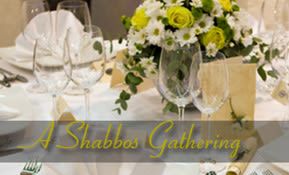
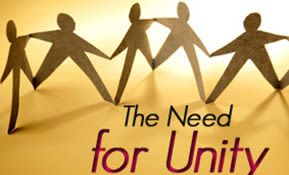

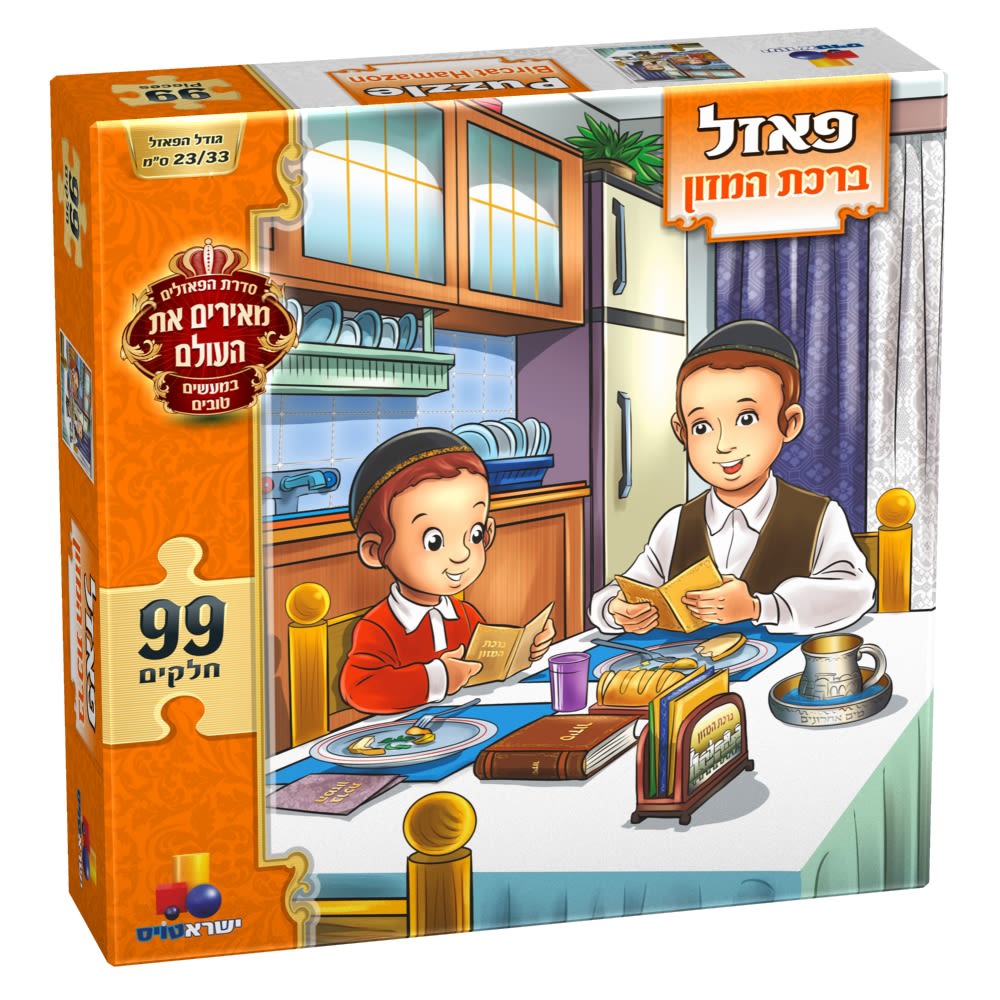
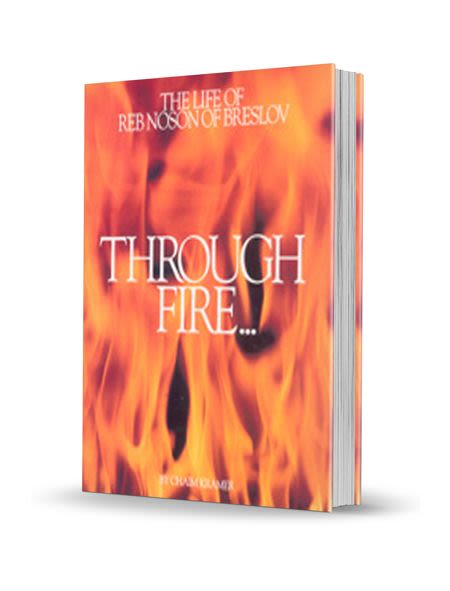
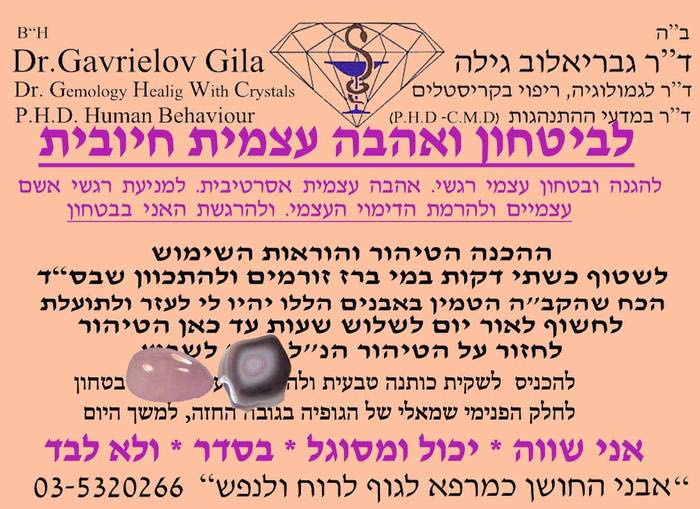

Tell us what you think!
Thank you for your comment!
It will be published after approval by the Editor.